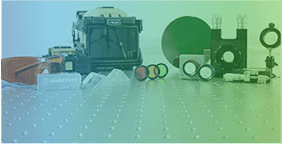Raman spectroscopy
In recent years, Raman spectroscopy has greatly influenced and revolutionized the analytical measurement market. A variety of new measurement methods has been developed to open up new possibilities in areas such as medicine, pharmaceuticals, the environment and research. That has also led to a continuous increase in the demand for new products.

In Raman spectroscopy, the material of any aggregate state to be investigated is irradiated with monochromatic light, typically a laser. In addition to the scattered light from the irradiated laser (Rayleigh scattering), further wavelength-shifted inelastic scattering effects (Stokes and anti-Stokes radiation) are observed, which are characteristic for each molecule and are often referred to as spectroscopic "fingerprints".
The setup and integration of Raman spectroscopy is comparatively simple as it has no high requirements for sample preparation and presentation: a laser for excitation of the object to be measured, a sensitive spectrometer for detection, and a probe or comparable optical access that provides excitation and filters out the excitation wavelength as needed.
Whether in medical technology, the pharmaceutical industry, or research and development, Raman spectroscopy is firmly established. Processes can be carried out in a more controlled and cost-efficient manner. Explosive or toxic substances, intoxicants, pharmaceuticals and even tumor cells can be precisely detected and analyzed in their components with the help of Raman spectroscopy.
Back to the Application Spectroscopy





